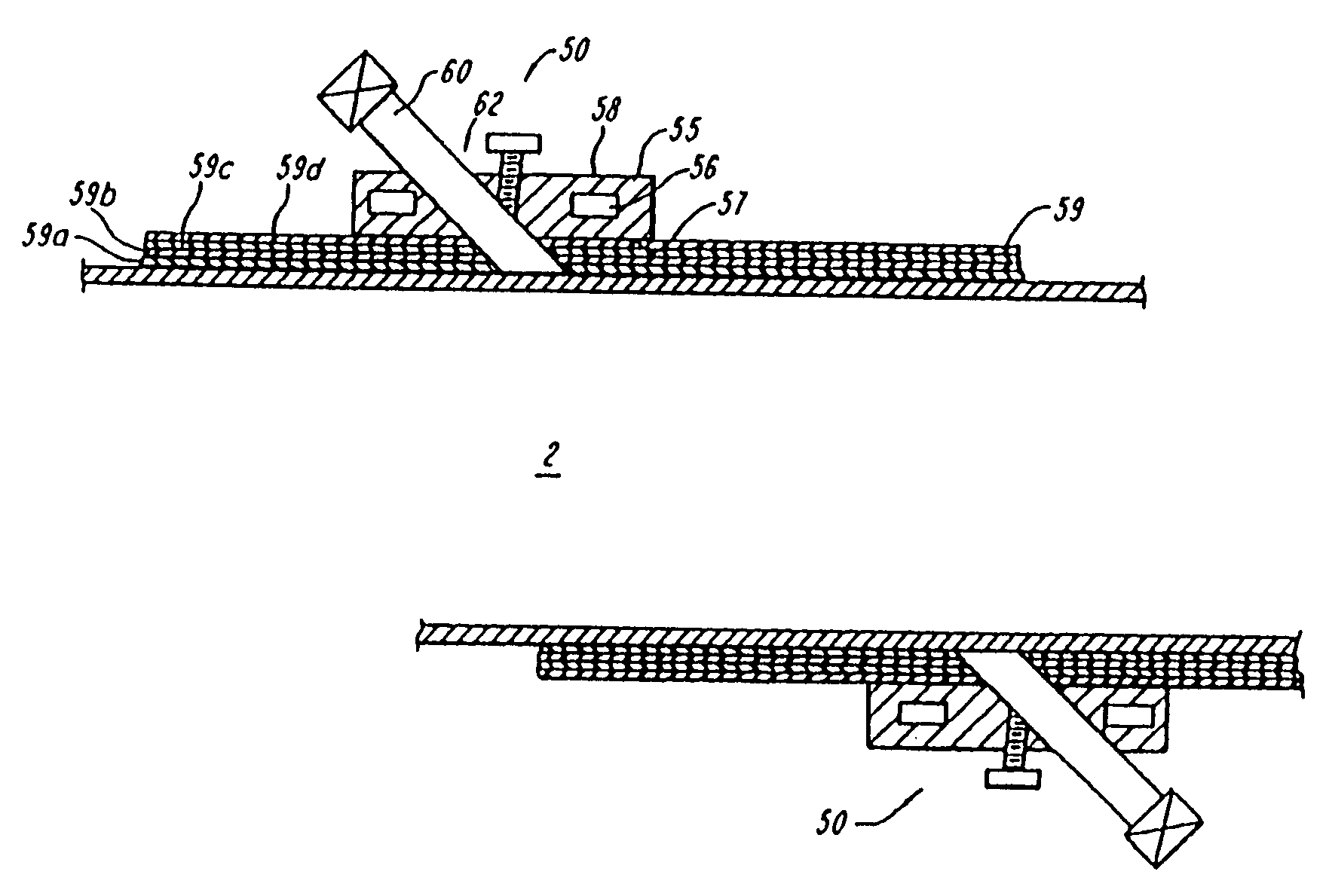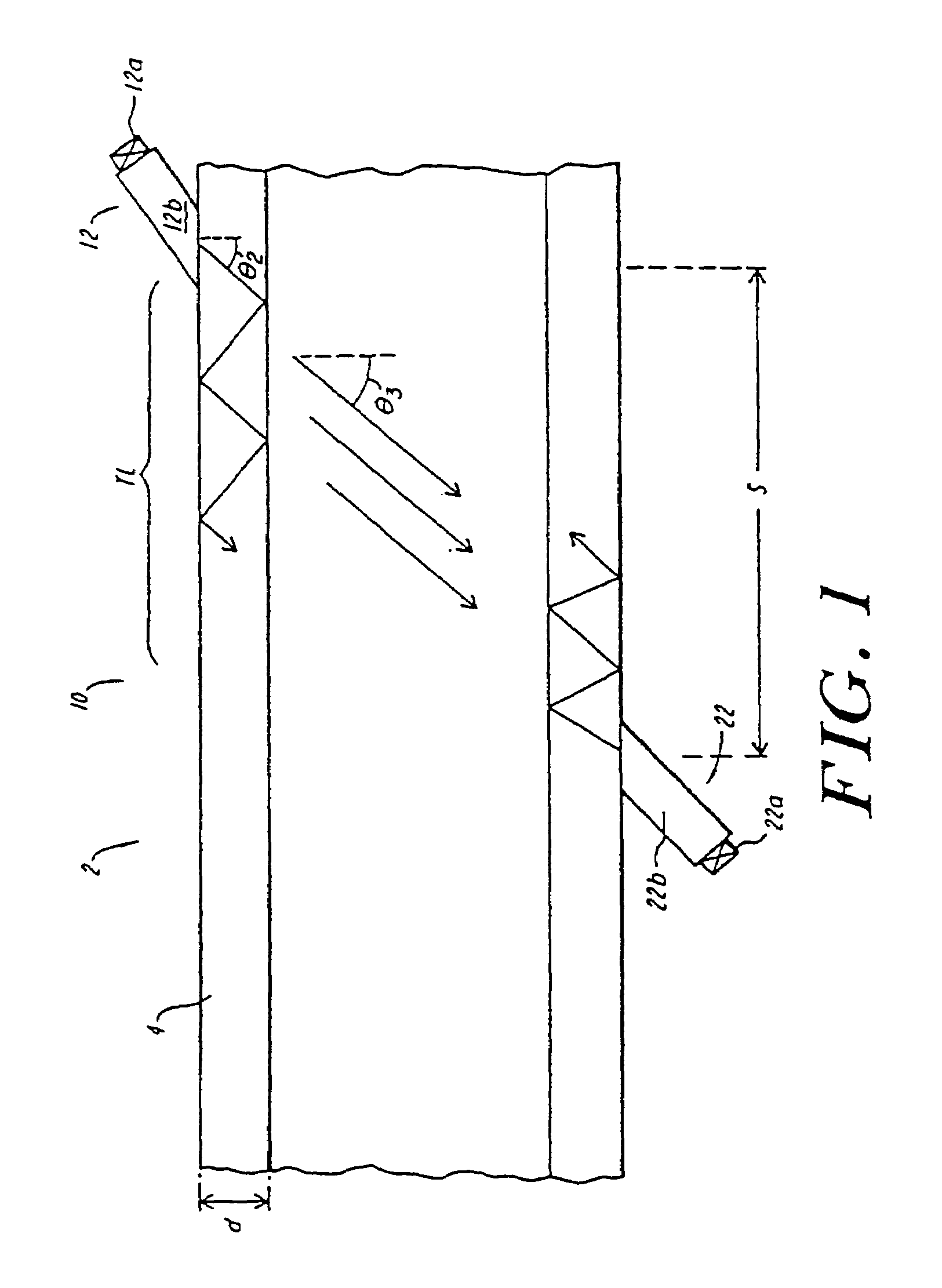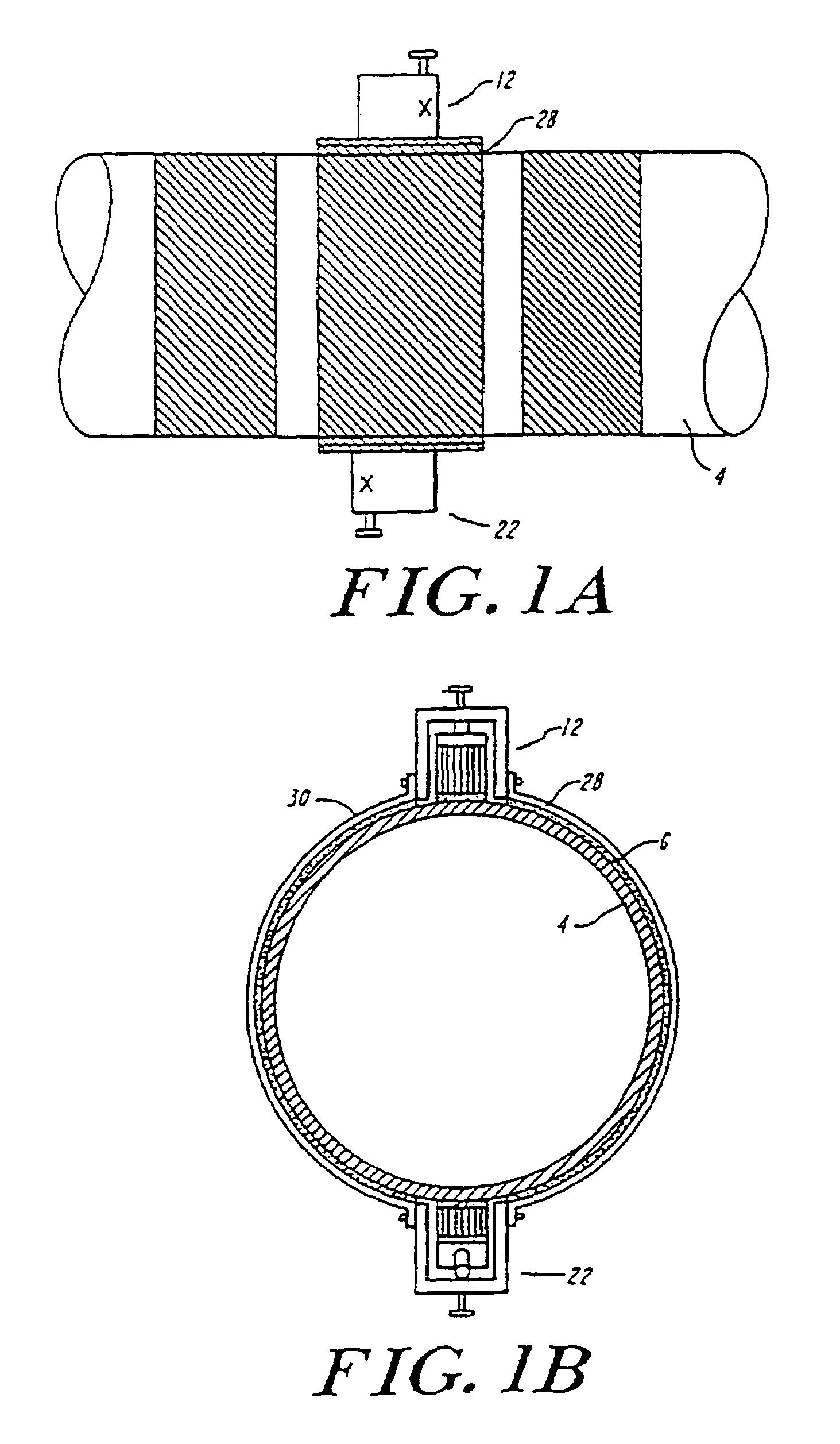Flow measurement system with reduced noise and crosstalk
a flow measurement and crosstalk technology, applied in the field of ultrasonic flow measurement, can solve the problem of substantially higher signal to noise ratio than expected, achieve high power, effectively repolarize the energy received, and enhance the sensitivity to coherent energy.
- Summary
- Abstract
- Description
- Claims
- Application Information
AI Technical Summary
Benefits of technology
Problems solved by technology
Method used
Image
Examples
Embodiment Construction
[0021]FIG. 1 shows an exemplary embodiment of a measurement system 10 in accordance with the present invention for measuring the flow of a low density liquid, low pressure steam or a gas such as flare gas in a conduit 2. This material will be referred to below simply as “steam” or “gas”, but will be understood to refer to such fluids generally, and, as applied to steam or gas, to refer both to steam at pressures below about three or four atmospheres up to pressures of fifteen to fifty or more atmospheres, and to a gas which may be at low or ambient pressure such that it presents a substantial impedance mismatch to the stack or conduit in which it flows.
[0022]As shown, the conduit 2 has a wall 4 with a thickness “d” which may, for example, be on the order of one half centimeter to several centimeters or more. As noted above, a problem in measuring a flowing gas or fluid such as steam at low pressure or temperature is that the conduit itself may be quite noisy, and may ring for a long...
PUM
 Login to View More
Login to View More Abstract
Description
Claims
Application Information
 Login to View More
Login to View More - R&D
- Intellectual Property
- Life Sciences
- Materials
- Tech Scout
- Unparalleled Data Quality
- Higher Quality Content
- 60% Fewer Hallucinations
Browse by: Latest US Patents, China's latest patents, Technical Efficacy Thesaurus, Application Domain, Technology Topic, Popular Technical Reports.
© 2025 PatSnap. All rights reserved.Legal|Privacy policy|Modern Slavery Act Transparency Statement|Sitemap|About US| Contact US: help@patsnap.com



